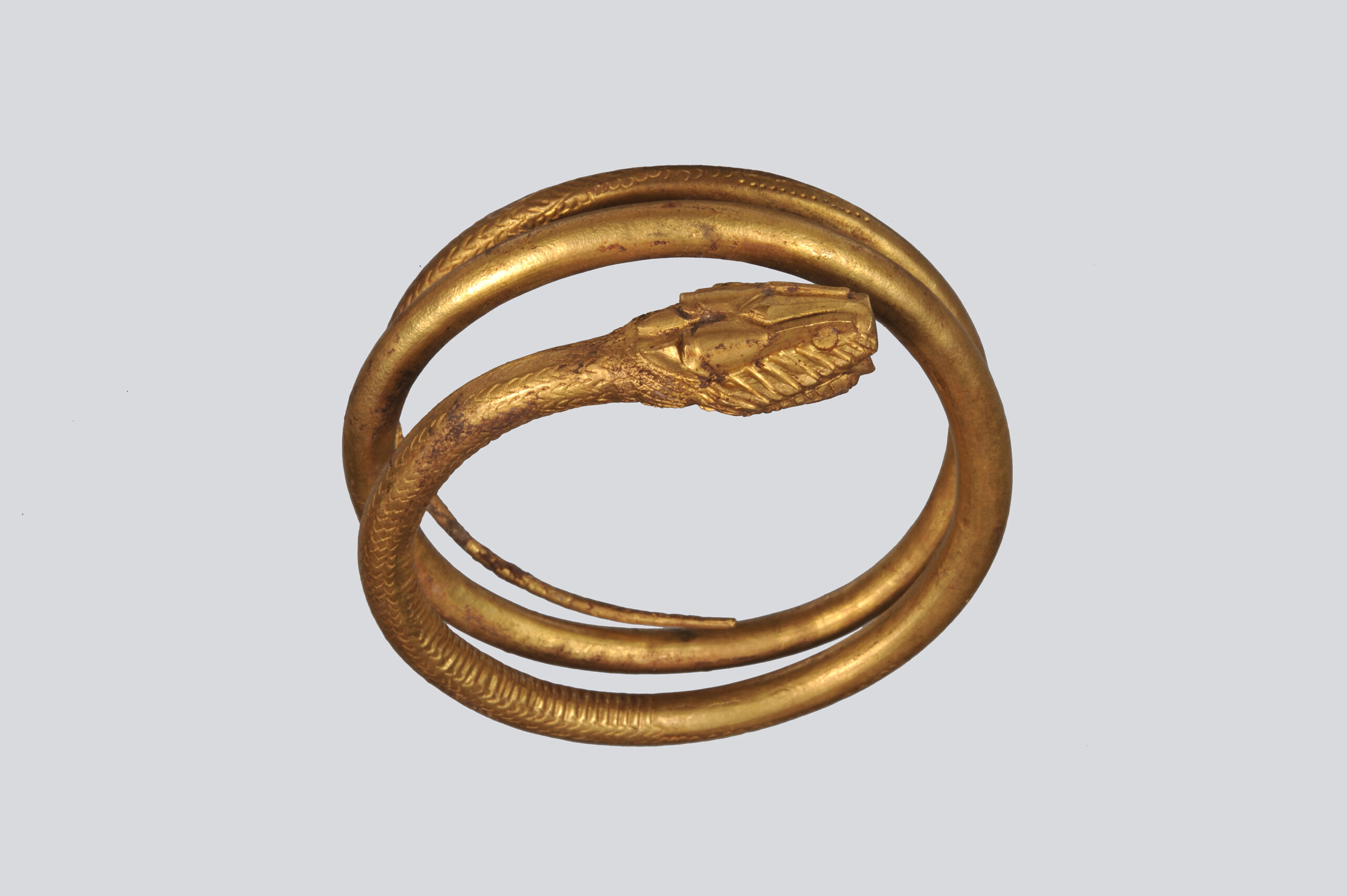Section of coins and gold jewels
The Coin section is undergoing an important refurbishment project, expected to be completed within the first few months of 2025, which includes the renovation of the lighting system, the integration of texts and graphics and, above all, the creation of a newly designed subsection, specifically dedicated to gold jewels from ancient Italy.
After about fifty years, a large and significant selection of the precious collection of jewels held by the Museum will be exhibited again, adding up to the limited arrays already present in some contexts of the thematic sections of “Magna Graecia”, “the House of the Faun” and the “Campania in the Roman period”.
Alongside the precious items found in some coin hoards of Pompeii and Herculaneum, the new exhibition displays little treasures of jewels set with precious stones and not, organized according to a chronological order and, if possible, by geographical or topographical contexts. They mainly come from archaeological excavations carried out across Southern Italy between the 18th and the 20th century, although they also are sometimes the result of donations and purchases.
As a start, to represent archaic goldsmithing in Magna Graecia’s towns and Etruscan-Italic contexts, the display includes jewels from Cuma, Chiusi and Populonia, respectively.
The specimens from the ancient sites of Egnazia, Tiriolo, Armento, Saticula and Capua reflect, instead, the excellent technical and artistic skills achieved by goldsmiths during the Hellenistic period, together with an extraordinary golden statuette of a wild goat produced in the far-away Edessa, which entered the Museum with the purchase of the exceptional collection of Cardinal Stefano Borgia. Roman goldsmithing is largely represented with a typological display of necklaces, ornaments, bracelets, earrings and rings, enriched by the display of the jewels found during the excavations at Herculaneum and above all at Pompeii and its surroundings, both in public buildings and in private villas and domus, as well as the precious objects carried on their person or in small bags by fugitives, who died during the catastrophic eruption of Mount Vesuvius.
Refined and rare fragments of gold thread fabrics bear evidence of the rich clothing and the taste of the matrons and the ancient Romans.
The exhibition ends with the splendid array of jewels produced by the Byzantine goldsmithing workshops, from the excavations carried out in 1915 at Senise, in Basilicata region.
After about fifty years, a large and significant selection of the precious collection of jewels held by the Museum will be exhibited again, adding up to the limited arrays already present in some contexts of the thematic sections of “Magna Graecia”, “the House of the Faun” and the “Campania in the Roman period”.
Alongside the precious items found in some coin hoards of Pompeii and Herculaneum, the new exhibition displays little treasures of jewels set with precious stones and not, organized according to a chronological order and, if possible, by geographical or topographical contexts. They mainly come from archaeological excavations carried out across Southern Italy between the 18th and the 20th century, although they also are sometimes the result of donations and purchases.
As a start, to represent archaic goldsmithing in Magna Graecia’s towns and Etruscan-Italic contexts, the display includes jewels from Cuma, Chiusi and Populonia, respectively.
The specimens from the ancient sites of Egnazia, Tiriolo, Armento, Saticula and Capua reflect, instead, the excellent technical and artistic skills achieved by goldsmiths during the Hellenistic period, together with an extraordinary golden statuette of a wild goat produced in the far-away Edessa, which entered the Museum with the purchase of the exceptional collection of Cardinal Stefano Borgia. Roman goldsmithing is largely represented with a typological display of necklaces, ornaments, bracelets, earrings and rings, enriched by the display of the jewels found during the excavations at Herculaneum and above all at Pompeii and its surroundings, both in public buildings and in private villas and domus, as well as the precious objects carried on their person or in small bags by fugitives, who died during the catastrophic eruption of Mount Vesuvius.
Refined and rare fragments of gold thread fabrics bear evidence of the rich clothing and the taste of the matrons and the ancient Romans.
The exhibition ends with the splendid array of jewels produced by the Byzantine goldsmithing workshops, from the excavations carried out in 1915 at Senise, in Basilicata region.

tag — Mann, Collezioni
Altre collezioni.








